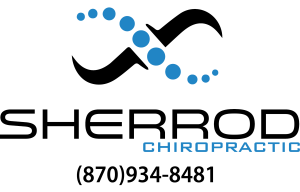Chiropractors at Winter Olympics
By Caitlin Lukacs
Olympic athletes have long known the benefits of chiropractic care. The U.S. Olympic Committee (USOC) began including doctors of chiropractic on the U.S. Medical Team during the 1980 Winter Olympic Games in Lake Placid, N.Y. This past winter, a record number of five chiropractors were sent to Vancouver, Canada, as members of the medical team for the 2010 Olympics. This year, the stage was also set for 23 doctors of chiropractic to be included into the official medical facility for the Games—the polyclinic—a historic accomplishment for the profession.
This inclusion didn’t happen overnight. For years, doctors of chiropractic have been involved with national Olympic committees (NOCs) and national sports organizations (NSOs). And their ability to provide excellent patient care and build relationships with other practitioners resulted in this historic progress.
Dr. Armitage credits Jack Taunton, MD, chief medical officer for VANOC, with chiropractic inclusion. Dr. Taunton has worked closely with DCs for many years, seeing first-hand the benefit of chiropractic care for athletes, and he felt that it was important to add chiropractic to the therapy department of the polyclinic, with one DC serving on staff every hour that the clinic was open.
The Chosen Ones
The International Olympic Committee (IOC) owns the rights to the Olympics and everything associated with the Games. This committee awards the Games to a city, which also has an organizing committee—VANOC, for example. The IOC determines the minimums of care that the city must supply.
Inside the Fence
Most countries have NOCs—the USOC, for example—that provide in-house medical services for the national athletes. Additionally, most sports have NSOs that provide medical care to the athletes of that specific sport. Host medical services, polyclinics, provide care for all athletes (and Olympic committee members, volunteers, coaches, etc.) in all sports from all countries. Essentially, a polyclinic is a hospital-type setting offering expanded medical services—diagnostic procedures and treatment options that the NSOs can’t provide—onsite during the Olympic Games.
Athletes were seen in the Vancouver Polyclinic for active injuries and for ongoing preventive care. The admission process consisted of a triage system. An athlete who requested a particular treatment, such as chiropractic, was sent directly to that provider. However, athletes with a specific condition or complaint were first triaged by the emergency room physician or sports medicine physician. If further diagnostics were needed—X-ray, MRI or CT scans, for example—they were available onsite. Once the diagnostic portion was complete, the athlete was referred back to the therapy group, to go through another triage system.
“Our goal was one athlete on one examination table with all of the therapy practitioners revolving around him or her,” explains Dr. Armitage. “It was a truly integrated multidisciplinary approach, and each athlete could receive any combination of the services provided. They were getting the best of all worlds.”
According to Dr. Lawson, one therapist described his experience working with DCs on his evaluation form at the end of the Olympics. He wrote, “One of my greatest concerns coming into the Olympics was working with DCs. One of my great pleasures after the Olympics was the opportunity to work with DCs. I learned so much, and it was a great experience.”
This sentiment was echoed by numerous practitioners in the polyclinic. “From all the feedback I’ve heard, both VANOC and IOC were extremely happy with our involvement and with the results we were able to obtain for the athletes,” says Dr. Armitage.
Planning Ahead
Utilization of the chiropractic care available at the polyclinic went well above the original expectations. The athletes took advantage of the entire therapy section to a greater degree than at any of the previous Olympic Games, as well. “Not only were we a part of a winning team, but we were a strong participant on that team,” says Dr. Armitage. “It was the most amazing thing I’ve ever seen in my life. So many barriers were broken down in regard to preconceived ideas and misunderstandings or prejudices between professions.”
“I can say with a sense of humility and pride that I think that our profession was served well by all members who worked in the polyclinic,” notes Dr. Lawson.
In preparation for the 2012 Olympic Games in London, there will be a transference of knowledge from VANOC to the London Organizing Committee and IOC. According to Dr. Armitage, the high utilization rates, as well as both practitioner and patient feedback about the care given in the polyclinic, will be shared with these governing bodies.
“We’re hoping that this will become a legacy in regard to the Olympics and the type of care available to the athletes,” he says.



